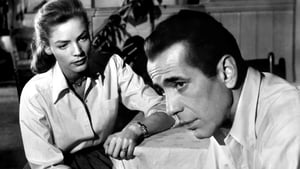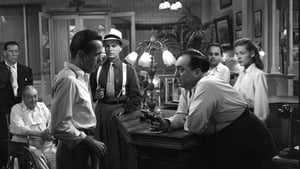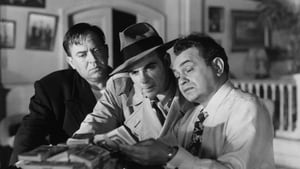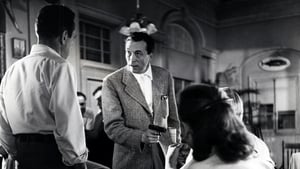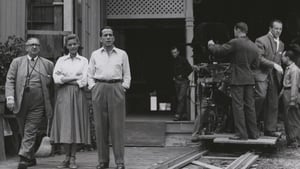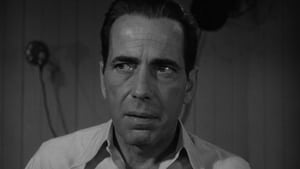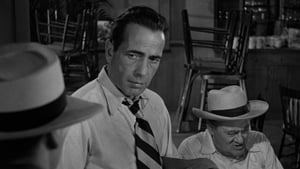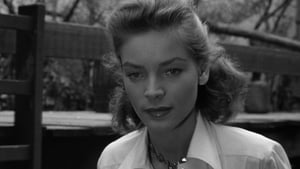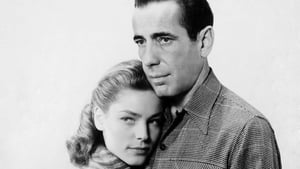Contact: [email protected]
Video Sources 0 Views
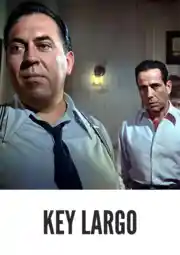
Synopsis
[ez-toc]





Introduction
In the ever-evolving landscape of the film industry, where cutting-edge technology and groundbreaking visuals dominate the screens, there’s a certain charm and allure to the classics. “Key Largo Colorized,” a 1948 film directed by the legendary John Huston, stands as a testament to the enduring appeal of old movies. Recently, the film has sparked new discussions with the release of a colorized version, raising questions about the preservation and revitalization of classic cinema.
Read Media File Transfer Agreement: Terms and Conditions
Read FAQ
Brief Explanation of Colorization
Colorization, the process of adding color to black and white films, has been both praised and criticized in the film industry. While some purists argue that it compromises the artistic integrity of the original work, others see it as a way to breathe new life into timeless classics. The colorization of “Key Largo Colorized” opens up a dialogue about the significance of preserving and revitalizing these gems for modern audiences.
Why Old Movies Are Still Beloved
Old movies, despite lacking the dazzling effects of contemporary cinema, continue to captivate audiences worldwide. There’s a certain magic in the storytelling, the acting, and the visual aesthetics that transcend time. As we delve into the world of “Key Largo Colorized,” we’ll explore how this film, with its gripping narrative and stellar performances, has stood the test of time.
Significance of Colorization
The release of a colorized version of “Key Largo” prompts us to ponder the significance of colorization in preserving and reviving classic films. Does adding color enhance the viewing experience, or does it dilute the essence of the original? Let’s embark on a journey through the making of “Key Largo Colorized” to understand its importance in the broader context of film history.
The Making of Key Largo Colorized: A Masterpiece in Noir Cinema
At the helm of “Key Largo Colorized” is the visionary director John Huston, known for his contributions to film noir and his distinctive storytelling style. Released in 1948, the film stars the iconic trio of Humphrey Bogart, Lauren Bacall, and Edward G. Robinson, along with the Academy Award-winning performance by Claire Trevor. Maxwell Anderson’s 1939 play provides the foundation for this noir crime drama, setting the stage for a cinematic experience that would leave an indelible mark on the industry.
Pivotal Work in John Huston’s Filmography
“Key Largo Colorized” occupies a special place in John Huston’s illustrious filmography. Known for his directorial prowess in films like “The Maltese Falcon” and “The Treasure of the Sierra Madre,” Huston brings his noir sensibilities to the tropical setting of Key Largo. The film represents a convergence of talent, with each actor delivering a performance that adds layers to the narrative.
Film Noir Elements and Stylistic Choices
As a film noir crime drama, “Key Largo Colorized” is replete with the genre’s characteristic elements—shadows, moral ambiguity, and a sense of foreboding. The atmospheric cinematography, coupled with Max Steiner’s evocative score, creates a mood that envelops the audience in suspense. The film’s stylish execution underscores its place as a masterwork in the film noir genre.
Maxwell Anderson’s Play and Its Cinematic Adaptation
Maxwell Anderson’s 1939 play, “Key Largo Colorized,” serves as the source material for the film. The play’s exploration of power dynamics and moral dilemmas finds resonance in the film adaptation, providing a solid foundation for the gripping narrative that unfolds in the Florida Keys.
The Plot Unraveled: Intrigue and Tension in the Florida Keys
Against the backdrop of a looming hurricane, “Key Largo Colorized” unfurls a tale of intrigue and tension. Humphrey Bogart’s character, a disillusioned World War II veteran, finds himself entangled with a group of gangsters led by Edward G. Robinson’s captivating portrayal of Johnny Rocco. The stage is set at a Key Largo hotel, owned by the Temple family, played by Lionel Barrymore and Lauren Bacall, where the characters’ lives converge in a deadly dance.
Conflict Amidst the Storm
The hurricane serves not only as a literal force of nature but also as a metaphor for the brewing conflict between Bogart’s character and the gangsters. The isolated and vulnerable setting amplifies the tension, creating an environment where trust is a rare commodity. As the storm rages outside, the characters’ internal struggles mirror the external chaos, leading to a climactic confrontation.
The Tropical Setting’s Contribution to Atmosphere
The choice of the tropical Florida Keys as the film’s setting adds a layer of complexity to the narrative. The sleepy hotel, seemingly far removed from the criminal underworld, becomes a microcosm of societal tension. The clash between the expatriate gangsters and the hotel’s owners and guests serves as a commentary on post-World War II America, adding depth to the film’s thematic richness.
From Black and White to Color: The Controversy of Key Largo’s Colorization
As we transition from the narrative to the cinematic medium itself, “Key Largo Colorized” takes on a new dimension with the recent release of a colorized version. The controversy surrounding colorization raises questions about the impact of visual aesthetics on the storytelling experience.
The Original Black and White Aesthetic
The 1948 American film noir crime drama was originally presented in classic black and white. This monochromatic visual style, synonymous with the noir genre, contributed to the film’s atmospheric and moody tone. The stark contrast, deep shadows, and silhouettes became integral to the storytelling, enhancing the viewer’s immersion into the world of “Key Largo Colorized.”
Exploration of Colorization Process
The decision to colorize “Key Largo Colorized” involves a meticulous process that requires both technical expertise and artistic judgment. How does the addition of color affect the film’s tone and mood? Does it enhance or detract from the original vision? Understanding the intricacies of the colorization process is essential to evaluating its impact on the overall cinematic experience.
Debate Surrounding Colorization
The practice of colorizing old movies has been met with resistance from purists who argue that it alters the filmmaker’s original intent. The debate surrounding colorization extends beyond technical considerations to the broader question of how we preserve and appreciate classic cinema. In the case of “Key Largo Colorized,” the controversy takes center stage, inviting audiences to reevaluate their perceptions of the film.
The Cast: Brilliant Performances That Transcend Time
At the heart of “Key Largo Colorized” are performances that have become iconic in the annals of cinema. Humphrey Bogart, Edward G. Robinson, Lauren Bacall, and Claire Trevor contribute to the film’s enduring legacy with their nuanced portrayals.
Humphrey Bogart in Key Largo Colorized
Humphrey Bogart, a stalwart of noir cinema, brings his signature grit and complexity to the character of Frank McCloud. As a war-weary veteran, Bogart’s performance captures the internal conflict of a man confronting his demons while navigating the external threats posed by Johnny Rocco and his gang.
Edward G. Robinson in Key Largo Colorized
Edward G. Robinson, known for his formidable presence on screen, delivers a mesmerizing portrayal of Johnny Rocco. The gangster with an air of sophistication becomes a formidable adversary, and Robinson’s performance elevates the character beyond the typical crime film antagonist.
Lauren Bacall in Key Largo Colorized
Lauren Bacall, the epitome of classic Hollywood glamour, infuses the character of Nora Temple with resilience and depth. As the wife of the hotel owner, Bacall’s chemistry with Bogart adds a layer of romantic tension to the film, creating a dynamic that resonates with audiences to this day.
Claire Trevor in Key Largo Colorized
Claire Trevor’s role as Gaye Dawn, Johnny Rocco’s alcoholic and tragic former moll, earned her the Academy Award for Best Supporting Actress. Trevor’s portrayal is a masterclass in character acting, and her haunting rendition of “Moanin’ Low” adds a poignant note to the film’s emotional landscape.
Supporting Players Who Shine: Memorable Characters in Key Largo
While the main cast commands attention, “Key Largo” is also an ensemble piece featuring standout performances by Lionel Barrymore and others. The supporting players contribute to the film’s rich tapestry, offering glimpses into the post-World War II societal landscape.
Lionel Barrymore’s Impact
Lionel Barrymore, as James Temple, the hotel owner struggling to maintain dignity in the face of adversity, adds a layer of gravitas to the film. Barrymore’s portrayal reflects the resilience of a generation scarred by war, embodying the struggles and hopes of a post-war America.
Ensemble Cast and Post-War America
The diverse ensemble cast, comprising characters such as Curly (played by Thomas Gomez) and other hotel guests, provides a microcosm of post-World War II America. The collective experiences and interactions paint a vivid picture of a society grappling with the aftermath of war, showcasing the film’s relevance beyond its immediate narrative.
Key Largo’s Lasting Impact on Cinema and Beyond
As we reflect on “Key Largo,” it becomes evident that the film has left an indelible mark on cinema, shaping the portrayal of gangster characters and influencing the depiction of atmospheric settings.
Shaping Future Crime Films
“Key Largo” serves as a template for future crime films, with its exploration of power dynamics, moral ambiguity, and atmospheric tension. The film’s legacy is visible in subsequent works that draw inspiration from its narrative intricacies and character dynamics.
Iconic Locations: The Atmospheric Hotel Setting
The sleepy tropical hotel, caught in the crossfire between the protagonists and antagonists, has become an iconic location in film history. The atmospheric setting, accentuated by the hurricane, has influenced the way filmmakers approach the use of environment to heighten tension and drama.
Overall Artistic Merit and Cultural Significance
The film’s artistic merit extends beyond its genre conventions, earning it a place of cultural significance. The enduring popularity of “Key Largo” attests to its ability to resonate with audiences across generations, transcending the limitations of its original release.
Preserving the Past, Embracing the Future: The Role of Colorization in Film Restoration
The controversy surrounding the colorization of “Key Largo” raises broader questions about the preservation of cinematic heritage and the role of film reviewers and editors in shaping the discourse.
Honoring Original Visual Intent
Preserving a film’s original visual intent is a paramount consideration in the realm of film restoration. Film reviewers and editors play a crucial role in advocating for the integrity of the filmmaker’s vision while acknowledging the potential benefits of exploring new artistic possibilities.
Balancing Historical Context and Contemporary Relevance
Colorization, when approached with sensitivity to historical context, can provide a fresh perspective on classic films. Reviewers and editors should contribute to a balanced discourse that considers both the era in which a film was made and its potential resonance with contemporary audiences.
Bringing Key Largo into the Present: The Significance of Colorized Version
The recent release of a colorized version of “Key Largo” invites audiences to experience the film in a new light. It prompts us to reconsider our preconceptions and approach classic films with an openness to diverse viewing experiences.
Recently Released Colorized Edition
The colorized edition of “Key Largo” adds a layer of vibrancy to the film, allowing audiences to see the Florida Keys and the characters in a different hue. The visual transformation prompts discussions about the impact of color on emotional engagement and the potential for a renewed appreciation of classic cinema.
Advocating for Diverse Viewing Approaches
As film reviewers and editors, it is essential to advocate for a diverse approach to experiencing old films. While the original black and white version remains a testament to the era’s cinematic language, the colorized edition opens doors for new audiences to engage with the narrative and characters.
Conclusion
In the ever-expanding landscape of film, where technological advancements continue to redefine the medium, “Key Largo” stands as a beacon of timeless storytelling. The film’s journey from black and white to color symbolizes the ongoing conversation about preserving the past while embracing the future. As film reviewers and editors, our role is to navigate this discourse, appreciating the craftsmanship that has made “Key Largo” a beloved classic in its various forms.
Final Thoughts
“Key Largo,” whether experienced in its original monochrome glory or the newly colorized version, remains a masterpiece in noir cinema. It invites audiences to immerse themselves in a bygone era, exploring the intricate web of relationships and moral complexities that define the film. As we navigate the evolving landscape of film restoration and colorization, let us celebrate the enduring legacy of “Key Largo” and continue to engage in conversations that honor the past while embracing the future of cinematic storytelling.
